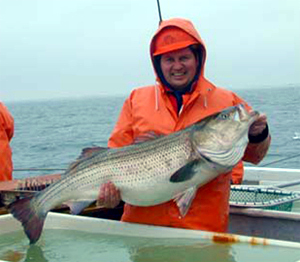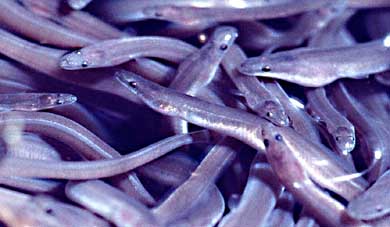|
Nemasket River
The Nemasket or Namasket River is a small river in southeastern Massachusetts. It flows north U.S. Geological Survey. National Hydrography Dataset high-resolution flowline dataThe National Map accessed April 1, 2011 from Assawompset Pond in Lakeville and through Middleborough where it empties into the Taunton River. The Nemasket's sole tributary is Fall Brook, which drains out from Tispaquin Pond. In Wampanoag Nemasket means ''Place where the fish are'', because it is the largest alewife run on the Eastern Seaboard. The water is clear and there are several good places for launching unmotorized boats, with popular spots including Old Bridge Street, Wareham Street, and Oliver Mill Park on U.S. Route 44. History The Native American Wampanoag Indians would leave their winter encampments inland and navigate the Taunton River to the Nemasket River in the early spring to take advantage of the alewife run and relocate to their summer encampment on Betty's Neck on Assawompsett ... [...More Info...] [...Related Items...] OR: [Wikipedia] [Google] [Baidu] |
Camp Joe Hooker
Camp Joe Hooker was an American Civil War training camp located in Lakeville, Massachusetts, used by the 3rd and 4th Massachusetts Volunteer Militia Regiments for training in Sept–Dec 1862. 9 August 2015. Retrieved 14 July 2020. See also *List of military installations in Massachusetts
This is a list of current and former military installations in the Commonwealth of Massachusetts.
Current military installations in Massachusetts Joint facilities
;Bases
* Joi ...
[...More Info...] [...Related Items...] OR: [Wikipedia] [Google] [Baidu] |
Rivers Of Plymouth County, Massachusetts
A river is a natural flowing watercourse, usually freshwater, flowing towards an ocean, sea, lake or another river. In some cases, a river flows into the ground and becomes dry at the end of its course without reaching another body of water. Small rivers can be referred to using names such as creek, brook, rivulet, and rill. There are no official definitions for the generic term river as applied to geographic features, although in some countries or communities a stream is defined by its size. Many names for small rivers are specific to geographic location; examples are "run" in some parts of the United States, "burn" in Scotland and northeast England, and "beck" in northern England. Sometimes a river is defined as being larger than a creek, but not always: the language is vague. Rivers are part of the water cycle. Water generally collects in a river from precipitation through a drainage basin from surface runoff and other sources such as groundwater recharge, springs ... [...More Info...] [...Related Items...] OR: [Wikipedia] [Google] [Baidu] |
Harp Seal
The harp seal (''Pagophilus groenlandicus''), also known as Saddleback Seal or Greenland Seal, is a species of earless seal, or true seal, native to the northernmost Atlantic Ocean and Arctic Ocean. Originally in the genus ''Phoca'' with a number of other species, it was reclassified into the monotypic genus ''Pagophilus'' in 1844. In Greek, its scientific name translates to "ice-lover from Greenland," and its taxonomic synonym, ''Phoca groenlandica'' translates to "Greenlandic seal." This is the only species in the genus ''Pagophilus''. Description The mature harp seal has pure black eyes. It has a silver-gray fur covering its body, with black harp or wishbone-shaped markings dorsally. Adult harp seals grow to be long and weigh from . The harp seal pup often has a yellow-white coat at birth due to staining from amniotic fluid, but after one to three days, the coat turns white and stays white for 2–3 weeks, until the first molt. Adolescent harp seals have a silver-gray coat ... [...More Info...] [...Related Items...] OR: [Wikipedia] [Google] [Baidu] |
Harbor Seals
The harbor (or harbour) seal (''Phoca vitulina''), also known as the common seal, is a true seal found along temperate and Arctic marine coastlines of the Northern Hemisphere. The most widely distributed species of pinniped (walruses, eared seals, and true seals), they are found in coastal waters of the northern Atlantic, Pacific Oceans, Baltic and North Seas. Harbor seals are brown, silvery white, tan, or gray, with distinctive V-shaped nostrils. An adult can attain a length of 1.85 m (6.1 ft) and a mass of up to . Blubber under the seal's skin helps to maintain body temperature. Females outlive males (30–35 years versus 20–25 years). Harbor seals stick to familiar resting spots or haulout sites, generally rocky areas (although ice, sand, and mud may also be used) where they are protected from adverse weather conditions and predation, near a foraging area. Males may fight over mates under water and on land. Females bear a single pup after a nine-month gestation, w ... [...More Info...] [...Related Items...] OR: [Wikipedia] [Google] [Baidu] |
Striped Bass
The striped bass (''Morone saxatilis''), also called the Atlantic striped bass, striper, linesider, rock, or rockfish, is an anadromous perciform fish of the family Moronidae found primarily along the Atlantic coast of North America. It has also been widely introduced into inland recreational fisheries across the United States. Striped bass found in the Gulf of Mexico are a separate strain referred to as Gulf Coast striped bass. The striped bass is the state fish of Maryland, Rhode Island, and South Carolina, and the state saltwater (marine) fish of New York, New Jersey, Virginia, and New Hampshire. The history of the striped bass fishery in North America dates back to the Colonial period. Many written accounts by some of the first European settlers describe the immense abundance of striped bass, along with alewives, traveling and spawning up most rivers in the coastal Northeast. Morphology and lifespan The striped bass is a typical member of the family Moronidae in shap ... [...More Info...] [...Related Items...] OR: [Wikipedia] [Google] [Baidu] |
American Shad
The American shad (''Alosa sapidissima'') is a species of anadromous clupeid fish naturally distributed on the North American coast of the North Atlantic, from Newfoundland to Florida, and as an introduced species on the North Pacific coast. The American shad is not closely related to the other North American shads. Rather, it seems to form a lineage that diverged from a common ancestor of the European taxa before these diversified. The American shad has been described as "the fish that fed the (American) nation's founders". Adult shad weigh between , and they have a delicate flavor when cooked. It is considered flavorful enough to not require sauces, herbs, or spices. It can be boiled, filleted and fried in butter, or baked. Traditionally, a little vinegar is sprinkled over it on the plate. In the Eastern United States, roe shads (females) are prized because the eggs are considered a delicacy. The name "shad" derives from the Old English ''sceadd'', meaning "herring"; it is ... [...More Info...] [...Related Items...] OR: [Wikipedia] [Google] [Baidu] |
American Eel
The American eel (''Anguilla rostrata'') is a facultative catadromous fish found on the eastern coast of North America. Freshwater eels are fish belonging to the elopomorph superorder, a group of phylogenetically ancient teleosts. The American eel has a slender, snake-like body that is covered with a mucus layer, which makes the eel appear to be naked and slimy despite the presence of minute scales. A long dorsal fin runs from the middle of the back and is continuous with a similar ventral fin. Pelvic fins are absent, and relatively small pectoral fins can be found near the midline, followed by the head and gill covers. Variations exist in coloration, from olive green, brown shading to greenish-yellow and light gray or white on the belly. Eels from clear water are often lighter than those from dark, tannic acid streams. The eel lives in fresh water and estuaries and only leaves these habitats to enter the Atlantic Ocean to make its spawning migration to the Sargasso Sea. Spa ... [...More Info...] [...Related Items...] OR: [Wikipedia] [Google] [Baidu] |
Rainbow Smelt
The rainbow smelt (''Osmerus mordax'') is a North American species of fish of the family Osmeridae. Walleye, trout, and other larger fish prey on these smelt. The rainbow smelt prefer juvenile ciscoes, zooplankton such as calanoid copepods ('' Leptodiaptomus ashlandi'', '' L. minutus'', '' L. sicilis''), and other small organisms, but are aggressive and will eat almost any fish they find. They are anadromous spring spawners and prefer clean streams with light flow and light siltation. The rainbow smelt face several barriers. They are weak swimmers and struggle to navigate fish ladders preventing them from making it past dams to the headwater streams where they spawn. The rise in erosion and dams helped to decimate the smelt population in the 1980s. There are currently plans to try to reduce damming and to help control erosion. Description The body of the rainbow smelt is slender and cylindrical. It has a silvery, pale green back and is iridescent purple, blue, and pink on the ... [...More Info...] [...Related Items...] OR: [Wikipedia] [Google] [Baidu] |




